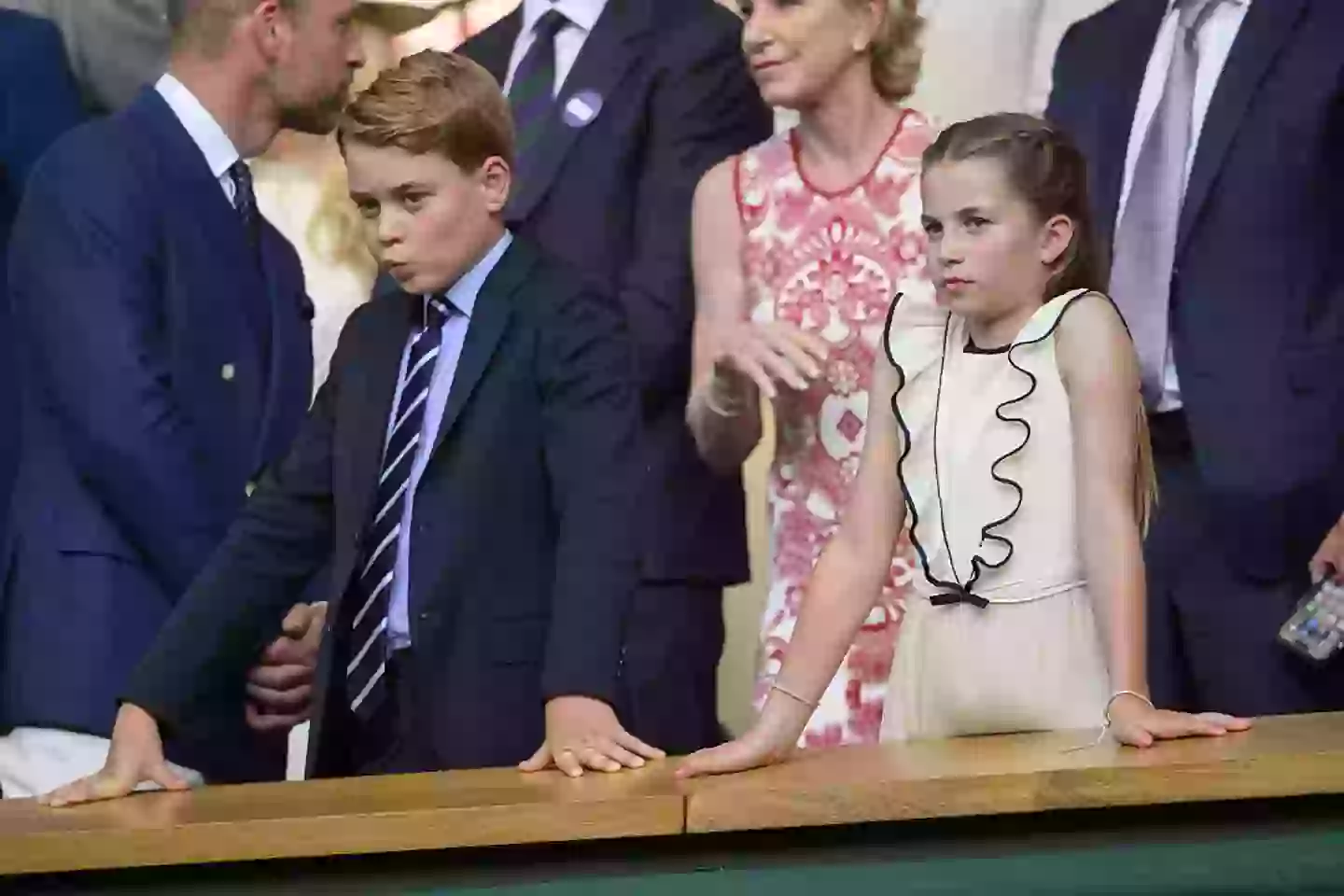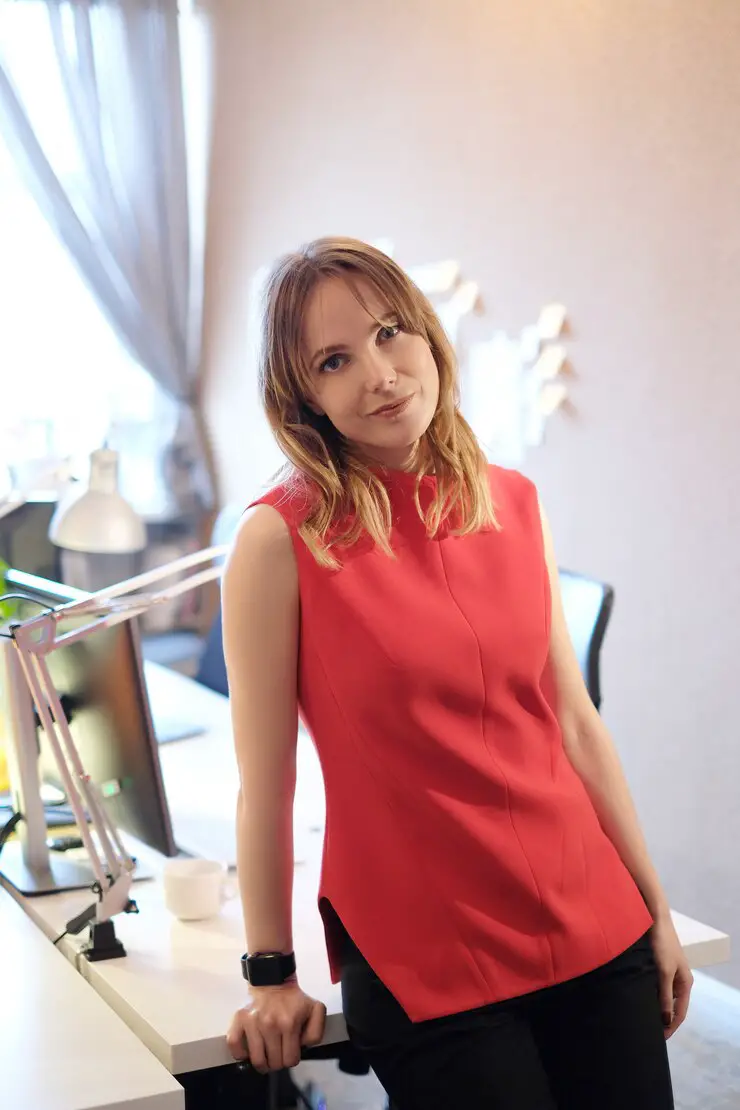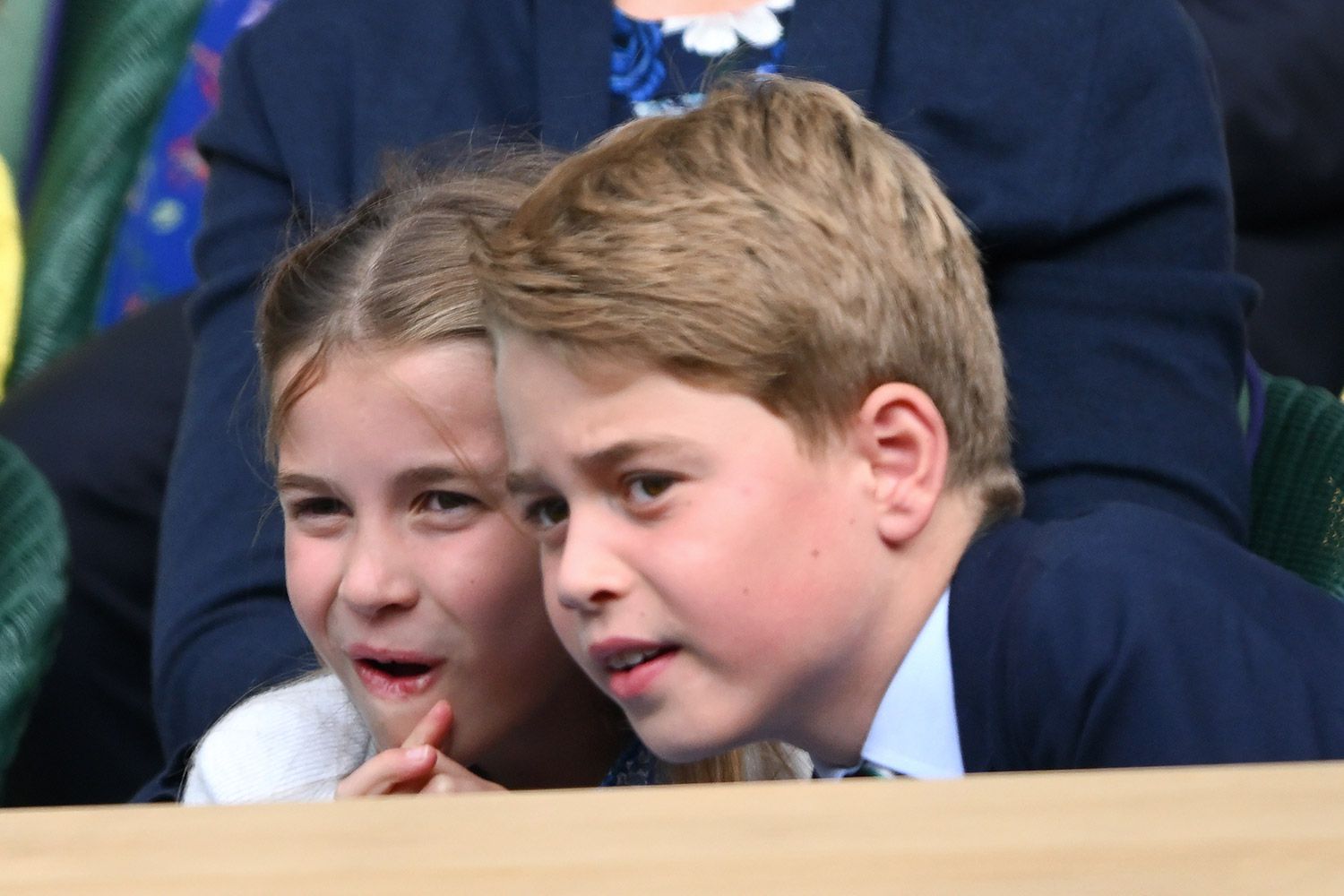Prince George and Princess Charlotte Receive Rare Wimbledon Royal Box Exception Despite Age Restrictions
.jpg)
Young Wales Children Granted Special Access to Prestigious Tennis Tournament Seating Despite General Prohibition on Minors
The prestigious All England Lawn Tennis and Croquet Club maintains some of the most exclusive and rigorously enforced protocols in professional sports, with its legendary Royal Box representing the pinnacle of tournament hospitality and social distinction. These time-honored traditions, established over more than a century of championship tennis, continue to define the unique character and cultural significance of Wimbledon as both a sporting event and a cornerstone of British social tradition.
On Sunday, July 13, Prince George and Princess Charlotte accompanied their parents, Prince William and Kate Middleton, to witness the men’s singles final at Wimbledon, where they received a rare exception to the tournament’s strict age restrictions for Royal Box attendance. The young royals, aged 11 and 10 respectively, were granted special permission to occupy seats in the most exclusive viewing area of the championship, despite general policies that typically prohibit children from accessing this prestigious section.
Historic Wimbledon Final Witnessed from Royal Box
The dramatic men’s singles final provided an extraordinary backdrop for the royal family’s attendance, as Italy’s Jannik Sinner secured his first Wimbledon championship title in a thrilling victory over defending champion Carlos Alcaraz of Spain. The match represented a changing of the guard in men’s tennis, with Sinner’s triumph marking a significant milestone in his professional career and providing the royal children with a memorable introduction to championship-level tennis.

The Wales family occupied prime seating in the Royal Box, which offers unparalleled views of Centre Court and represents the most coveted viewing experience available at the tournament. This exclusive vantage point allowed Prince George and Princess Charlotte to witness tennis history while experiencing the unique atmosphere that has made Wimbledon a cultural institution extending far beyond the sport itself.
The significance of their attendance extends beyond mere celebrity spotting, as both children demonstrated genuine engagement with the match proceedings and appeared to appreciate the sporting excellence unfolding before them. Their presence in the Royal Box also provided an educational opportunity about both tennis and the cultural traditions associated with one of Britain’s most prestigious sporting events.
Understanding the Royal Box: History and Exclusivity
The Royal Box at Wimbledon represents one of the most exclusive seating arrangements in international sport, with its 74 carefully allocated seats reserved for a highly select group of individuals deemed worthy of this exceptional hospitality. Established in 1922, this iconic viewing area has served as the entertainment space for distinguished guests of the All England Club for over a century.
The historical significance of the Royal Box extends beyond its physical presence to encompass its role as a symbol of British sporting tradition and social hierarchy. Over the decades, this exclusive area has hosted royalty, heads of state, tennis legends, and other distinguished figures from various fields, creating a unique intersection of sport, diplomacy, and cultural celebration.
According to official Wimbledon documentation, the carefully curated guest list includes “British and overseas Royal Families, heads of government, people from the world of tennis, commercial partners, British armed forces, prominent media organisations, supporters of British tennis and other walks of life.” This comprehensive but selective approach ensures that Royal Box occupants represent a diverse cross-section of achievement and influence while maintaining the area’s prestigious character.
Notable Attendees and Celebrity Presence
The 2025 Wimbledon Championships attracted an impressive array of celebrity attendees who joined the royal family in the exclusive seating area. Notable figures gracing the Royal Box throughout the tournament included pop sensation Olivia Rodrigo, football icon David Beckham, and acclaimed actor Hugh Grant, demonstrating the broad appeal and cultural significance of the championship.
These high-profile attendees contribute to Wimbledon’s unique atmosphere, where sporting excellence meets cultural celebration and social distinction. The presence of celebrities from entertainment, sports, and other fields creates a dynamic environment that enhances the tournament’s profile while maintaining its traditional character and exclusivity.
The diversity of Royal Box guests reflects Wimbledon’s position as more than simply a tennis tournament, functioning instead as a significant cultural event that attracts attention from multiple spheres of public life. This multifaceted appeal helps maintain the championship’s relevance and prestige in contemporary British society.
Strict Protocol and Dress Code Requirements
Access to the Royal Box comes with comprehensive behavioral expectations and dress code requirements that apply to all guests regardless of their fame, wealth, or social status. These protocols maintain the dignified atmosphere that has characterized Wimbledon for generations while ensuring appropriate respect for the tournament’s traditions and fellow spectators.
The dress code requirements are particularly stringent, with male guests expected to wear either a jacket and tie or a complete suit. Female guests must adhere to smart attire guidelines that reflect the formal nature of the occasion and the prestige associated with Royal Box access. These requirements have occasionally caught celebrities off-guard, including incidents involving Formula One driver Lewis Hamilton and even Meghan Markle during her pre-royal years.
One specific protocol that demonstrates the attention to detail in Royal Box management is the prohibition on ladies wearing hats, as these accessories can obstruct the view of guests seated behind them. This practical consideration illustrates how even seemingly minor details are carefully managed to ensure optimal viewing experiences for all Royal Box occupants.
The enforcement of these protocols applies universally, demonstrating that Royal Box access comes with responsibilities and expectations that transcend individual status or celebrity. This democratic approach to protocol compliance helps maintain the respectful atmosphere that characterizes this exclusive viewing area.
The Age Restriction Exception for Royal Children
Perhaps the most significant aspect of Prince George and Princess Charlotte’s attendance was their reception of a rare exception to the Royal Box’s general prohibition on children. This policy typically excludes minors from the exclusive seating area due to space limitations, behavioral expectations, and the formal nature of the environment.
The exception granted to royal children represents a recognition of their unique position within British society and their role as future representatives of the monarchy. This special consideration acknowledges both their status and their gradual introduction to public duties and cultural traditions that will characterize their future roles.
Prince George’s Wimbledon history dates back to 2022 when he first attended the tournament at age eight, while Princess Charlotte made her debut in 2023, also at age eight. This pattern suggests a deliberate approach to introducing royal children to significant cultural events at an age when they can appreciate and appropriately participate in formal occasions.
The consistency in introducing both children at age eight indicates careful consideration of developmental readiness and behavioral expectations. This thoughtful approach ensures that their Royal Box experiences are positive and educational while maintaining the dignified atmosphere expected in this exclusive environment.
The Absence of Prince Louis: Age and Behavioral Considerations
The notable absence of seven-year-old Prince Louis from the family’s Wimbledon attendance has generated discussion among royal observers and fans. Social media commentary has suggested that his absence likely relates to age-appropriate considerations and the behavioral expectations associated with Royal Box attendance.
Tennis matches, particularly championship finals, can extend for several hours and require sustained attention and quiet behavior that may be challenging for younger children. The decision to leave Prince Louis at home likely reflects parental wisdom about developmental readiness and the appropriateness of extended formal events for children of different ages.
The pattern established with his older siblings suggests that Prince Louis may make his Wimbledon debut next year when he reaches the age of eight, continuing the family tradition of introducing royal children to significant cultural events at appropriate developmental stages.
This graduated approach to public appearances demonstrates thoughtful parenting that balances public duties with child development considerations, ensuring that young royals have positive experiences that prepare them for future responsibilities.
Royal Patronage and Tennis Connection
Kate Middleton’s role as royal patron of the All England Lawn Tennis and Croquet Club adds special significance to the family’s Wimbledon attendance. This patronage, which she assumed in 2016, reflects both her personal interest in tennis and her commitment to supporting British sporting institutions.
The Princess of Wales has become a familiar and beloved figure at Wimbledon, rarely missing the tournament’s final days and consistently demonstrating genuine enthusiasm for tennis. Her patronage has brought renewed attention to the sport while maintaining the dignity and tradition associated with royal involvement in cultural institutions.
Her children’s introduction to Wimbledon through Royal Box attendance represents both a family tradition and a gradual preparation for their future roles in supporting British cultural and sporting institutions. This experiential education provides them with understanding and appreciation for the traditions they may one day represent.
Cultural and Educational Value
The attendance of Prince George and Princess Charlotte at Wimbledon serves multiple educational purposes beyond mere entertainment. Their presence in the Royal Box provides firsthand experience with British cultural traditions, protocol requirements, and the intersection of sport with social responsibility.
These experiences contribute to their understanding of their future roles while providing enjoyable family activities that combine education with entertainment. The exposure to championship-level tennis may also inspire personal interest in the sport while demonstrating the importance of supporting British athletic achievement.
The careful balance between public duty and family experience exemplifies the modern approach to royal child-rearing, where traditional responsibilities are introduced gradually through positive, age-appropriate experiences.
Media Coverage and Public Interest
The royal children’s Wimbledon attendance generated significant media attention and public interest, reflecting the ongoing fascination with the Wales family and their approach to balancing public duties with normal childhood experiences. The positive reception of their appearance demonstrates public support for their gradual introduction to royal responsibilities.
Social media commentary largely praised the family’s approach to the Wimbledon visit, with many observers noting the children’s appropriate behavior and apparent enjoyment of the tennis. This positive reception validates the careful planning and consideration that goes into their public appearances.
Future Implications and Traditions
The successful Royal Box experience for Prince George and Princess Charlotte likely establishes a foundation for continued Wimbledon attendance as they mature. Their positive introduction to this prestigious event may contribute to lifelong appreciation for tennis and understanding of their roles in supporting British cultural institutions.
The establishment of this family tradition also provides a template for introducing Prince Louis to similar experiences when he reaches appropriate developmental readiness. The gradual, thoughtful approach demonstrated with all three children reflects modern royal parenting that prioritizes child welfare while fulfilling public expectations.
Conclusion
The rare exception granted to Prince George and Princess Charlotte for Royal Box access at Wimbledon represents more than simple protocol flexibility; it demonstrates the careful balance between maintaining institutional traditions and recognizing the unique circumstances of royal children. Their attendance at this historic tennis final provided valuable cultural education while contributing to their gradual preparation for future public roles.
The success of their Wimbledon experience, marked by appropriate behavior and apparent enjoyment, validates the thoughtful approach taken by their parents in introducing them to significant cultural events. As they continue to mature, these experiences will likely contribute to their understanding and appreciation of the traditions and responsibilities that characterize their unique positions in British society.
The exception made for these young royals ultimately serves both institutional and personal purposes, maintaining Wimbledon’s prestigious character while providing meaningful family experiences that combine duty with pleasure in the ongoing evolution of modern royal life.

Sophia Rivers is an experienced News Content Editor with a sharp eye for detail and a passion for delivering accurate and engaging news stories. At TheArchivists, she specializes in curating, editing, and presenting news content that informs and resonates with a global audience.
Sophia holds a degree in Journalism from the University of Toronto, where she developed her skills in news reporting, media ethics, and digital journalism. Her expertise lies in identifying key stories, crafting compelling narratives, and ensuring journalistic integrity in every piece she edits.
Known for her precision and dedication to the truth, Sophia thrives in the fast-paced world of news editing. At TheArchivists, she focuses on producing high-quality news content that keeps readers informed while maintaining a balanced and insightful perspective.
With a commitment to delivering impactful journalism, Sophia is passionate about bringing clarity to complex issues and amplifying voices that matter. Her work reflects her belief in the power of news to shape conversations and inspire change.
